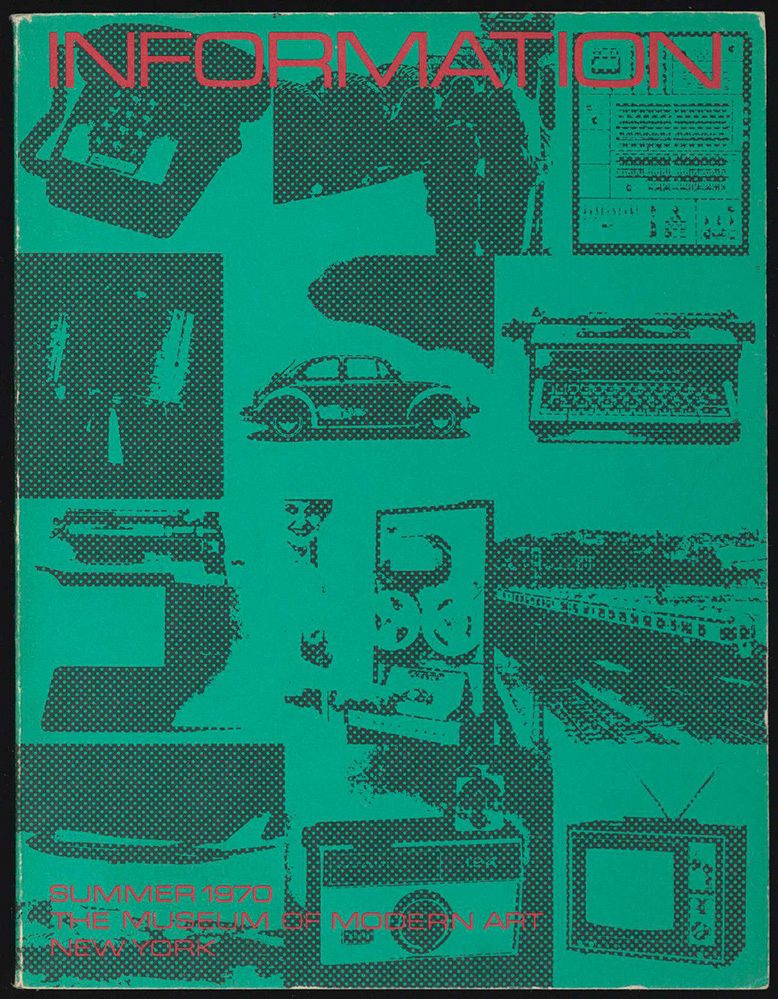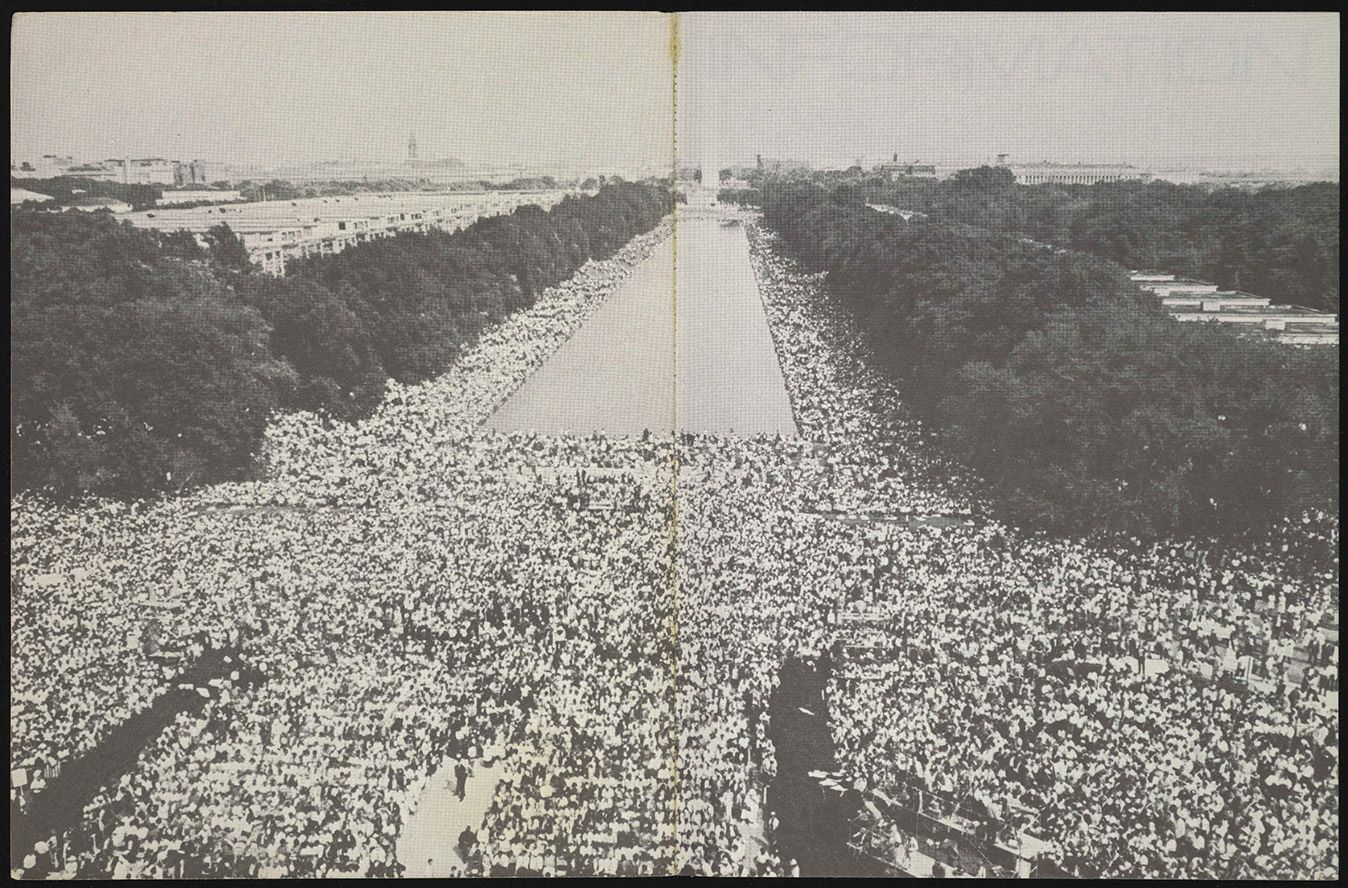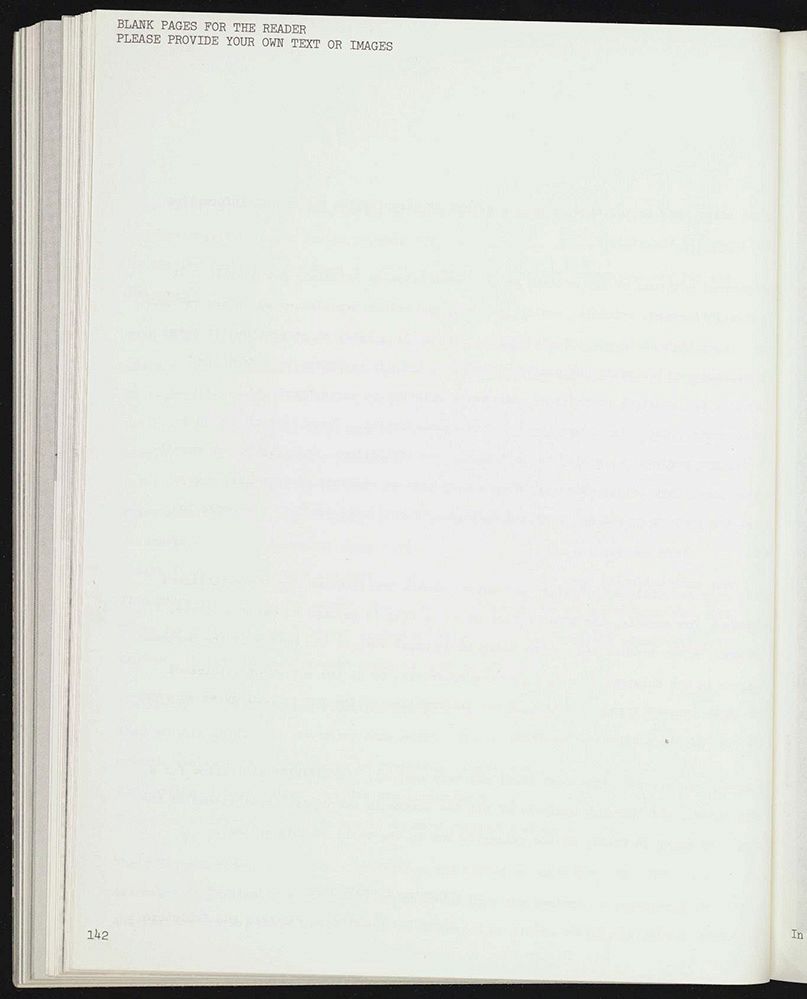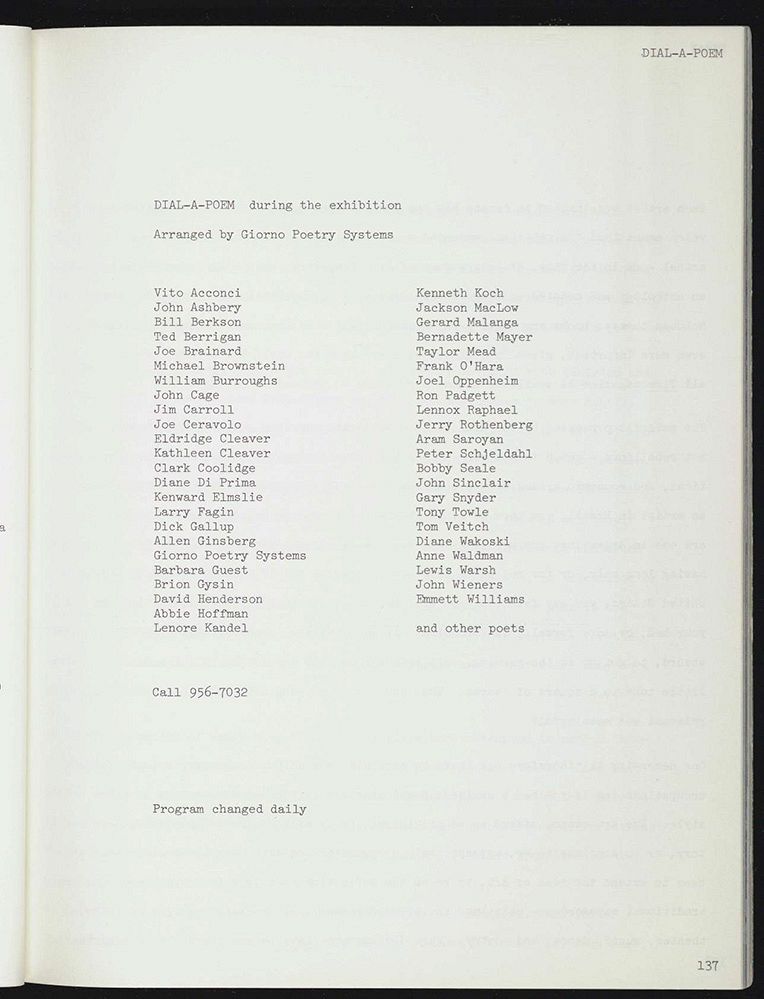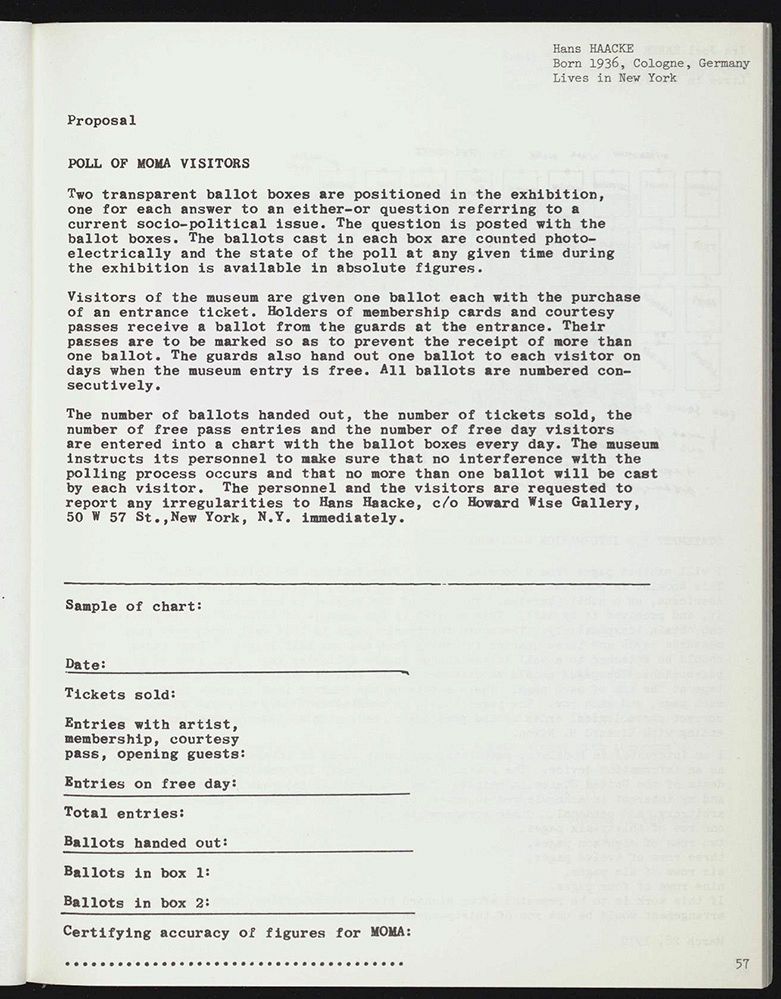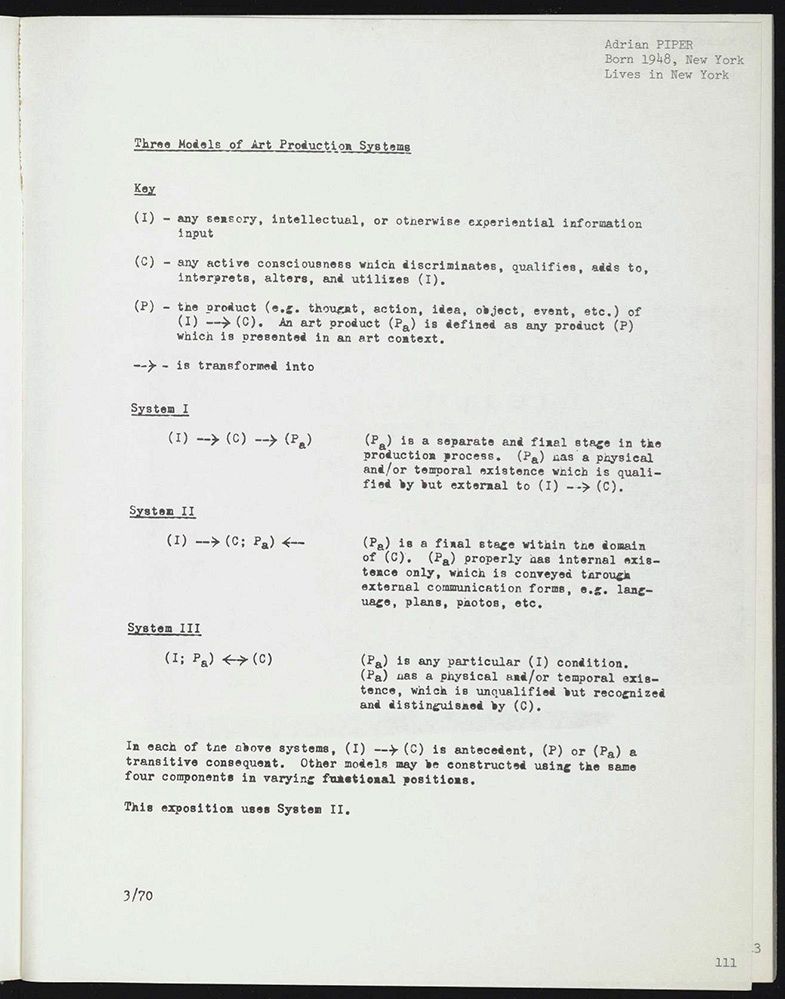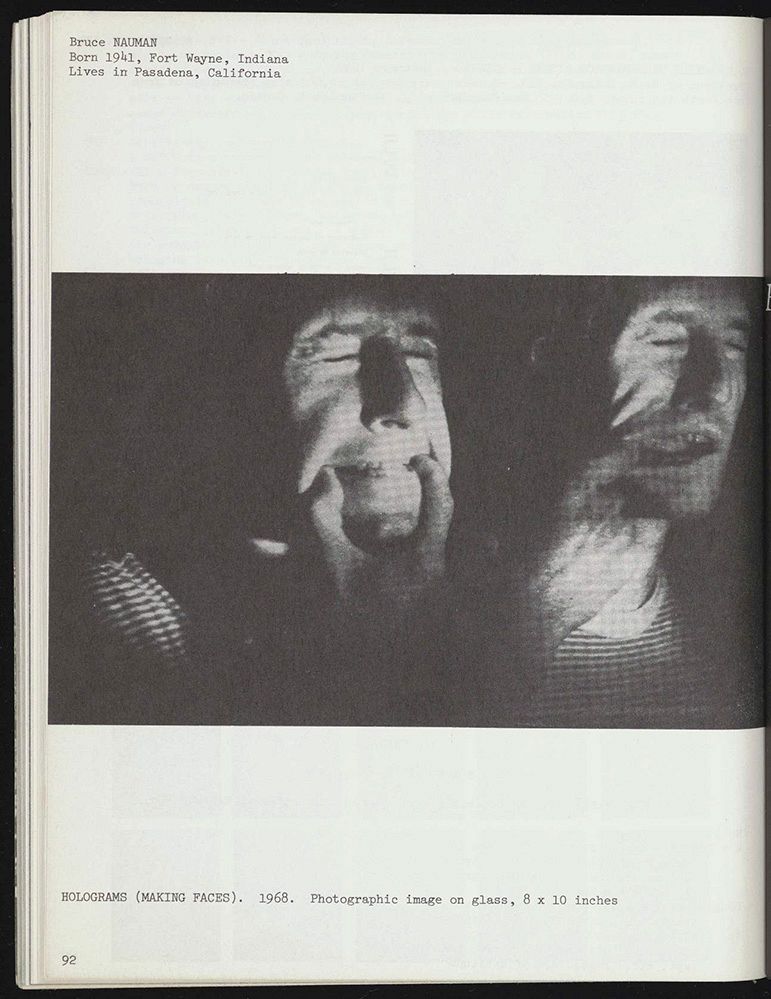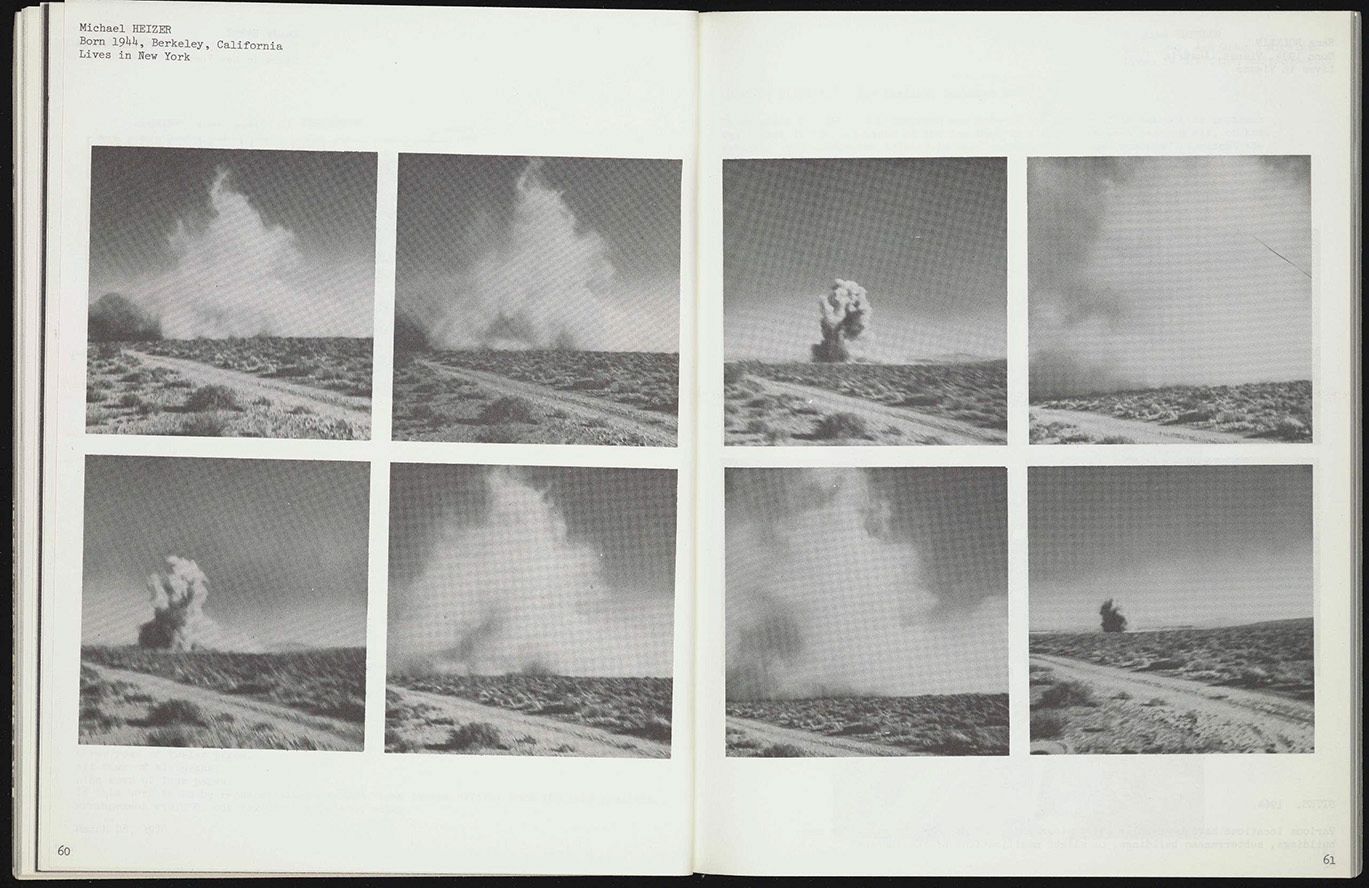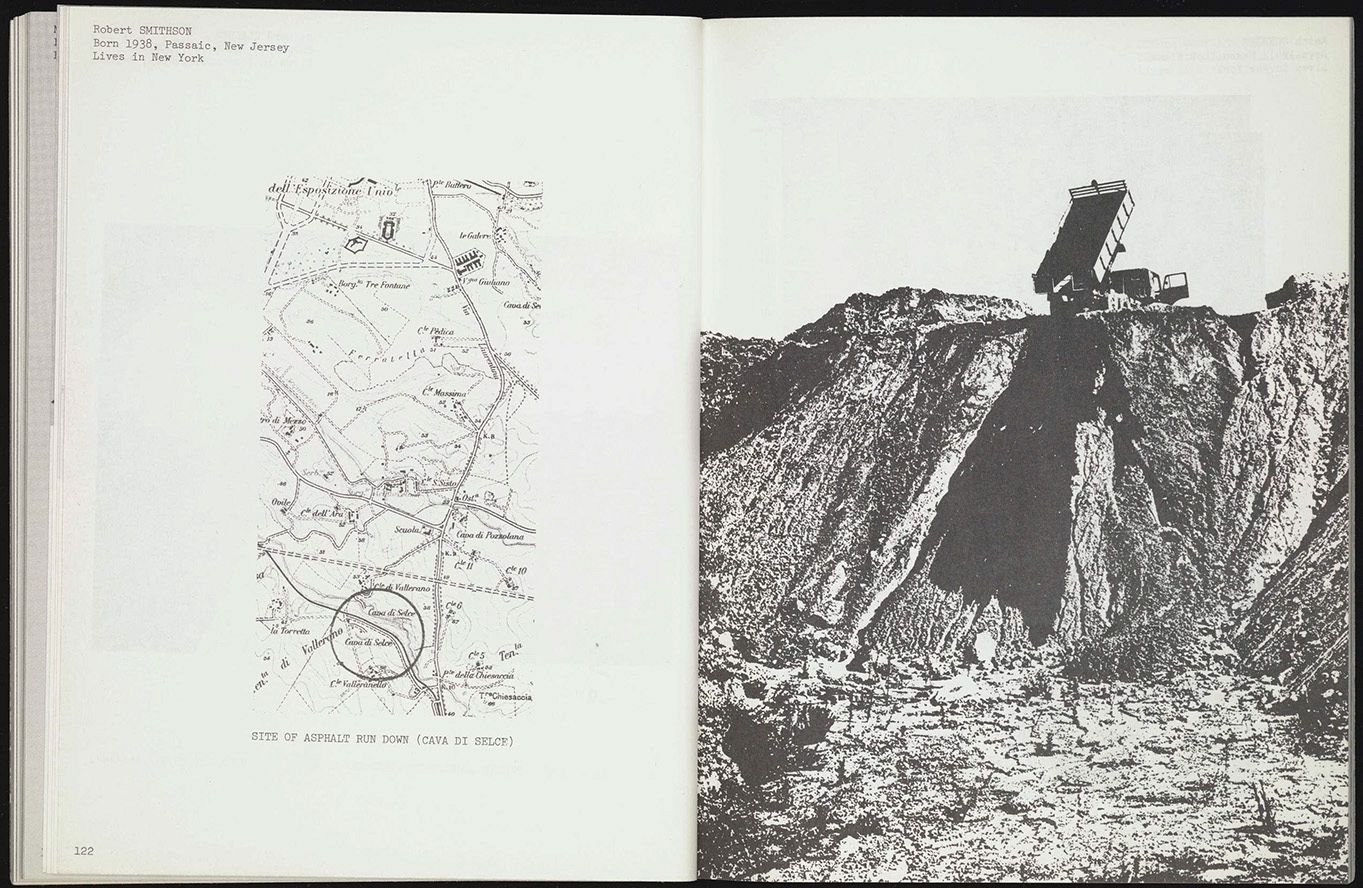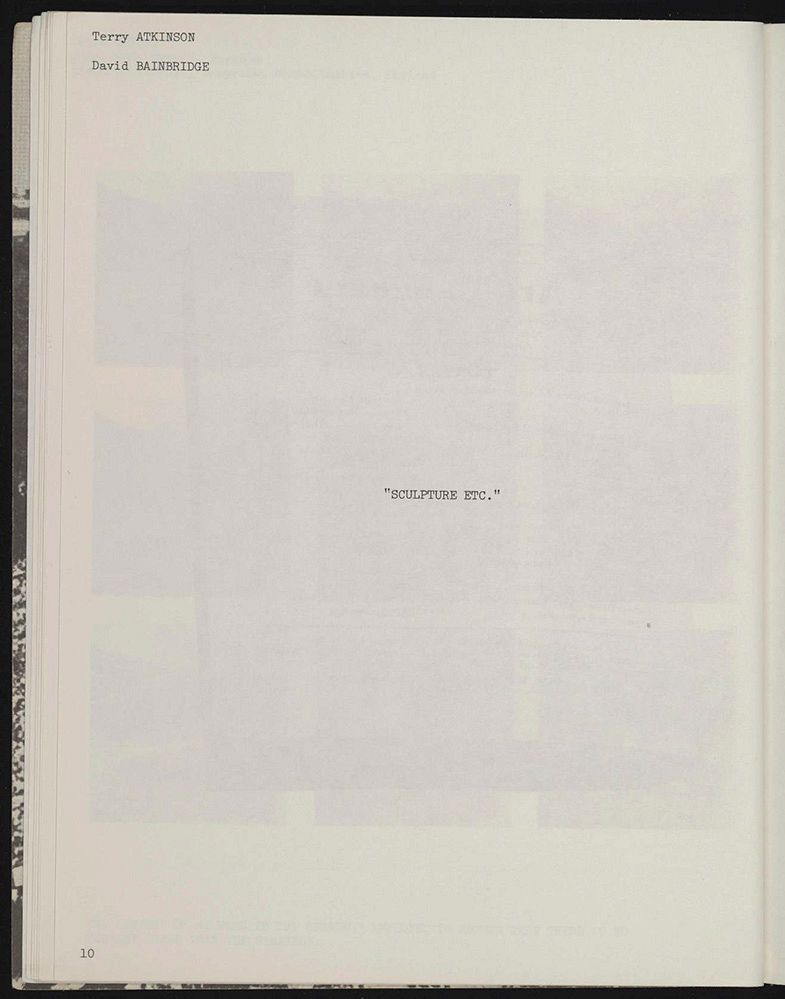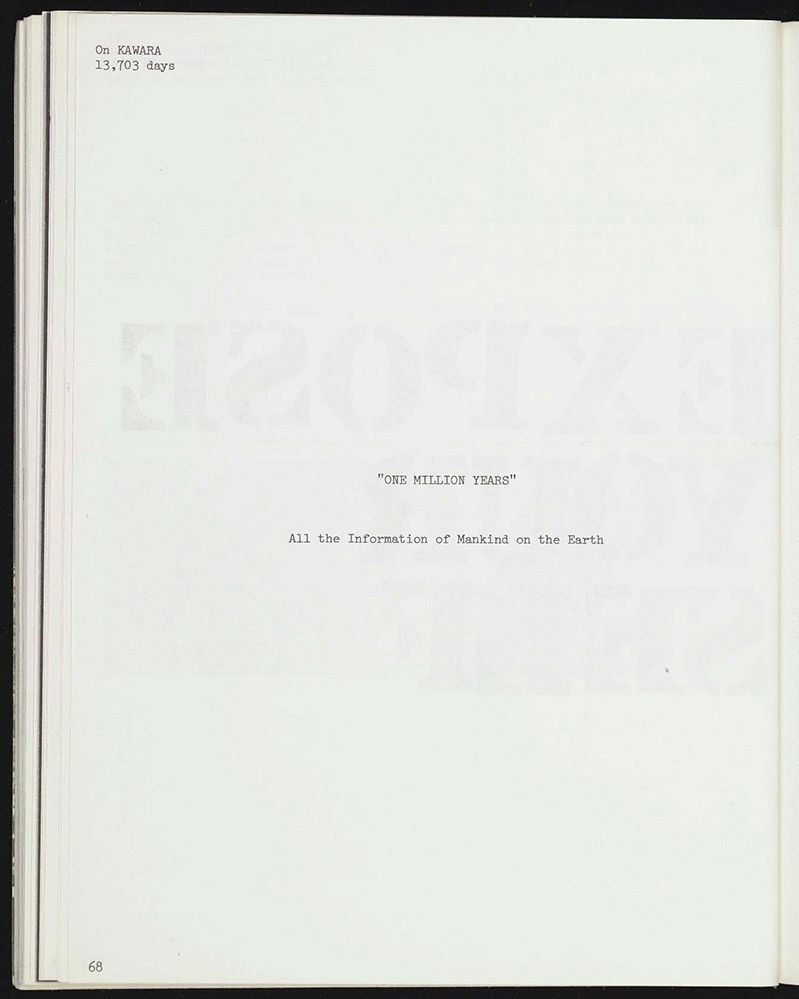I sometimes wonder: when did we know to call each artistic movement, each visual sensibility by its name? New York-based art historian and critic Lucy R. Lippard contributed to the collective awareness of a visual movement when she remarked that, by the late sixties, “[conceptual] art seemed … to be the only race in town.”1Lucy R. Lippard, Six Years: The Dematerialization of the Art Object from 1966-1972 (University of California Press, 1973), vii. But for many, visualizing this (or any) cultural phenomenon, now and then, poses significant challenges. Conceptual art has been described as a “free-for-all,” where an emphasis on the idea supersedes object-based concerns.2Ibid. In the art historical sense, conceptualist thinking harnesses the continuous momentum of Euro-American artistic avant-gardism of the earlier 20th century –– to establish self-definition as art as the sole qualification for art. As such, artists exhibit a further refusal of traditional concerns related to medium-specificity, authorship, or morphology. Some striking choices in medium signal the movement’s untraditional, even antagonistic stance: ephemeral debris from real-life infrastructures, assemblage of found quotidian materials, mail art, and amateur photography. In many instances, it also became crucial to contest the very site that hosted the work’s content. In the end, however, any attempts to define conceptual art through material forms risks losing the bigger picture. Conceptual art’s impulse lies in its inherent resistance to be defined by any concrete mediums or forms; its shapelessness necessarily looms large.
Let us work backwards. Is it possible that conceptual art could, in fact, speak to us through a tactile shape and form? This artifact currently lies on my desk, a manual-like book with identical front and back soft bound green covers, with silhouettes of technological artifacts scattered across. The red lettering, in futuristic font, reads: “Information. Summer 1970. Museum of Modern Art, New York.” As its heading indicates, the Information book was intended as a constitutive object of a summer group show staged in MoMA fifty years ago. This “international report on the recent activity of young artists”3Press Release No. 671, “Photography Featured in MoMA Summer Exhibition,” published by the Museum of Modern Art, New York. featured over 150 artists from fifteen regions and exhibited the early works of artists such as Vito Acconci, Dan Graham, Michael Heizer, and John Baldessari.4An in-depth introduction on the exhibition can be found in Eve Meltzer’s informative essay, “The Dream of the Information World.” The title itself is a loaded one. In a later reflection, curator and editor Kynaston McShine revealed that the choice of title was intuitive, a nod to the Information Age as much as Marshall McLuhan’s highly influential writings on “information” and its metaphysics.5In McShine’s words:“I kept going to studios and not letting on that I was doing a big exhibition, and I kept saying to people, “I’m here for information. I couldn’t figure out a title for the show, so I called it Information.” See the link.
Compared to its ephemeral, two-month long exhibition counterpart, the Information book creates a transportable and enduring site of conceptualist propositions and thinking. Given a blank ground with fixed dimensions (a US letter size tableau paper), each participating artist or collective unit utilized a page, or up to several spreads, to create “site-specific” works.6McShine opens with the following statement in his curatorial essay: “each artist was invited to create his own contribution to this book, a situation which meant that the material presented would be either directly related to the actual work in the show, or independent of it. Therefore, this book is essentially an anthology and considered a necessary adjunct to the exhibition.” See Essay, Information, 1970. See also Miwon Kwon, One Place After Another: Site-Specific Art and Locational Identity. The word “site-specificity” went through various historical turns since 1960s. And as she remarks, the term is now “dispersed across much broader cultural, social, and discursive fields, and organized intertextually through the nomadic movement of the artist—operating more like an itinerary than a map—the site can now be as various as a billboard, an artistic genre, a disenfranchised community, an institutional framework, a magazine page, a social cause, or a political debate.” Introduction, 3. A quick look inside the book reveals the book’s refreshing editorial approach, as well as the sheer diversity of visual forms, creating no less than a para-materialist intervention of conceptual art. Organizational entries such as a table of contents, curatorial essays, or gallery wall texts, remain minimal; when they are included, they perform administrative tasks in the most non-intrusive ways possible, foregrounding the artists’ content. Evoking the functions of a user manual, Information extends an invitation to the readers to participate and interact. For example, Dial a Poem offers readers a listed phone number to dial in order to hear the daily-selected spoken words by John Ashbery, Diane Di Prima, William S. Borroughs, and other Beat Generation poets. Consider also an unattributed installation which leaves the page almost entirely blank, except for a simple note at the top: “Blank pages for the reader. Please provide your own text or images.” It is a self-writing anthology that dreams of an imagined community of global conceptualism.
Against the dystopian backdrop of the Vietnam War, Civil Rights movements, and counterculture that erupted in the 1960s, conceptual art occasionally suffered an accusation of indulgent escapism, and was therefore deemed apolitical by its detractors. In the telling words of McShine, however, the participating artists painted a picture of a collective “disorientation of the world”7In the words of Edouard Glissant, “Nevertheless, we are part of the disorientation of the world.” Edouard Glissant, Caribbean Discourse: Selected Essays (The University Press of Virginia,1996), 3.:
If you are an artist in Brazil, you know of at least one friend who is being tortured; if you are one in Argentina, you probably have had a neighbor who has been in jail for having long hair. Or for not being ‘dressed’ properly, and if you are living in the United States, you may fear that you will be shot at, either in the universities, in your bed, or more formally in Indochina. It may seem too inappropriate, if not absurd, to get up in the morning, walk into a room, and apply dabs of paint from a little tube to a square of canvas. What can you as a young artist do that seems relevant and meaningful?8Ed. Kynaston McShine, Information (MoMA, 1970), 87.
Works such as Hans Haacke’s Poll and Adrian Piper’s Three Models of Art Production System are later identified as the earliest instances of so-called institutional critique art. Piper’s and Haacke’s work presented “information” that skeletonizes museums’ complicity in brokering power relations and sustaining injustice. Haacke published his ballot in its entirety in Information, while Piper used the language of pseudocode to algorithmize her very own art within the system “Art Production System.” The self-diagnosis reads: “System II… (Pa) properly has internal existence only, which is conveyed through external communication forms, eg. language, plans, photos, etc…This exposition uses System II.”9Ibid, 111. Compared to their exhibited forms, the book-based presentations of these works seem right at home –– free from the constraint of tectonic spaces, the works solicit a response from readers as their hands meet the pages. Both the voting ballot and pseudocode mimic the mass transmission of societal data, but in so doing, debunk the myth that “information” can be neutrally transmitted.
Some crucial visual patterns of conceptual art emerge out of participants’ experimental approaches to present their thoughts onto the pages of Information. In particular, Information demonstrates an extensive engagement with the photographic reportage: to document performances and proposals through typological or serial display images, mimicking the transformation of bodily movements and built environments. Body-based performances include Keith Arnatt’s “self-burial” piece and Bruce Nauman’s Holograms (Making Faces).Bernd and Hilla Becher’s Anonymous Sculpture consists of the frontal view of an industrial tower. Earthwork pioneers like Robert Smithson and Michael Heizer might have been modifying parts of earth to realize their sculptural (or anti-sculptural) vision in a remote locale, but their transformative thinking bestowed upon the landscapes are recorded and imprinted between the pages of Information. Smithson features the proposal of his first completely outdoor installation in Cava dei Selce, Rome, whereas Michael Heizer’s six serial square images reveal the demolition that would later be revealed as the site for his Double Negative installation in Overton, Nevada.10See the link.
But perhaps more characteristically, many projects engage with language-text in lieu of the absence of figuration –– a form of illustrative text.11Whitney Davis, Masking the blow: the scene of representation in late prehistoric Egyptian art, Appendix: Pictorial Narrative (Berkeley : University of California Press, 1992). In Information, language-text functions both as a transmitter of meanings and depictive graphs. Contributors include Group Frontera of Buenos Aires, Ian Burn & Mel Ramsden, and Lucy R. Lippard. They range from a critical bibliography by Lippard and Yoko Ono’s five-part poem exercise to something as whimsical as Robert Morris’ short text on “A Method of Sorting Cows.” If these works share any commonality beyond their engagement with language-text, it would be what Burn and Ramsden summarized as the idea that “propositional arguments have priority over material constituents.”12Ed. Kynaston McShine, Information (MoMA, 1970), 87.
The conceptualist excavation of the linguistic nature of art is best exemplified by Art-Language Press’s Terry Atkinson, David Bainbridge, and Michael Baldwin. Their work, “Sculpture Etc.,” announces its entire content is a text in all capital letters, written in typewriter font. Works as such infinitely compress time and engage in what would later be attributed as a central tenet of conceptual art: an emphasis of visual form that begins and dies simultaneously within the split instance of its ideation. An exceptional case of using text not to flatten but conflate time-based reality can be found in On Kawara’s installment. Citing no birth time or origin, Kawara marks his existence through the number of days that he has lived. As for the work, it simply declares the entire content in its self-designated duration and scope, “One Million Years. All the Information of Mankind on the Earth.” Attempting to negotiate both a macrocosmic and microcosmic experience of time, this page seems to propose the hypothesis that there are no mediums but time-based mediums. And here, again, I speak not just of a visibility found within a book, but also of a nascent artistic-linguistic outlook writing itself out of the very book.
Art history and criticism have often privileged exhibition histories and artists’ biographies over other artistic concerns. Many have often chosen to narrate histories through “monumental” objects or select individuals. In comparison to other material forms, books deal with the perceptual disjuncture between the shapelessness of an idea and the tactility of an object with a surprising ease. A book functions as a sort of gravestone, instead of a shrine, for these ephemeral works, not to deny their deaths, but to affirm that they did, in fact, exist.
To wit, any biographical or canon-based historical consciousness must by definition fall flat when dealing with conceptual art, a movement whose premise operates upon the negation of the inflated significance of medium-specificity or defining events. As the contemporary world experiences the physical deprivation of museum spaces in this pandemic period, a portable site such as Information challenges the sluggish ways in which we respond to conceptual art. The eerie stasis of a book becomes the resting ground for the most fleeting sensibilities. In other words, it presents a rare opportunity to challenge an epistemic outlook towards global conceptualist art and feel again how the artists, the audience of 1970, and the artworks themselves felt. More importantly, let us remember that conceptual art, like other visual modernisms, was born of profound disappointment for the world — while boldly announcing a proposal for a new one. Viewed in this light, it is no longer surprising that a book, rather than a “place,” holds the more intimate, and persistent dialogue with an audience that lasts beyond its place and time.
Felix Chan is currently a PhD student in the Department of Art History at University of California, Los Angeles, specializing in modern and contemporary art in East Asia. His most recent research is concerned with the global history of photography, as well as conceptualist art practice in China since the 1990s. Prior to that, Felix Chan served as curatorial assistant at The Walther Collection in New York, where he supported the collection's effort in researching, exhibiting, and publishing Chinese photography, as well as vernacular photography. He was the recipient of the Incentive Award of Young Art Critics from the International Association of Art Critics (AICA) in 2018 for his piece, A Theater–In Absence. He currently splits his time between Los Angeles, New York, and Hong Kong.
